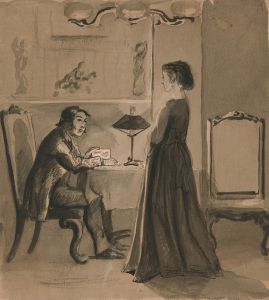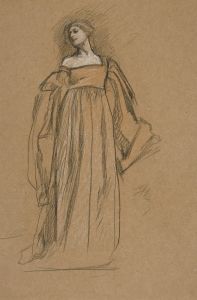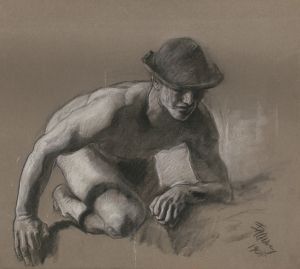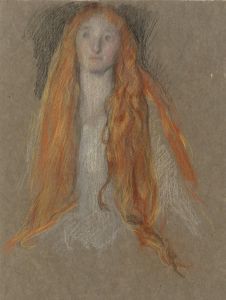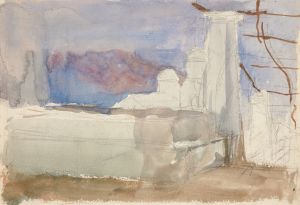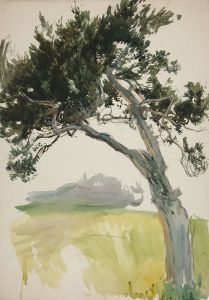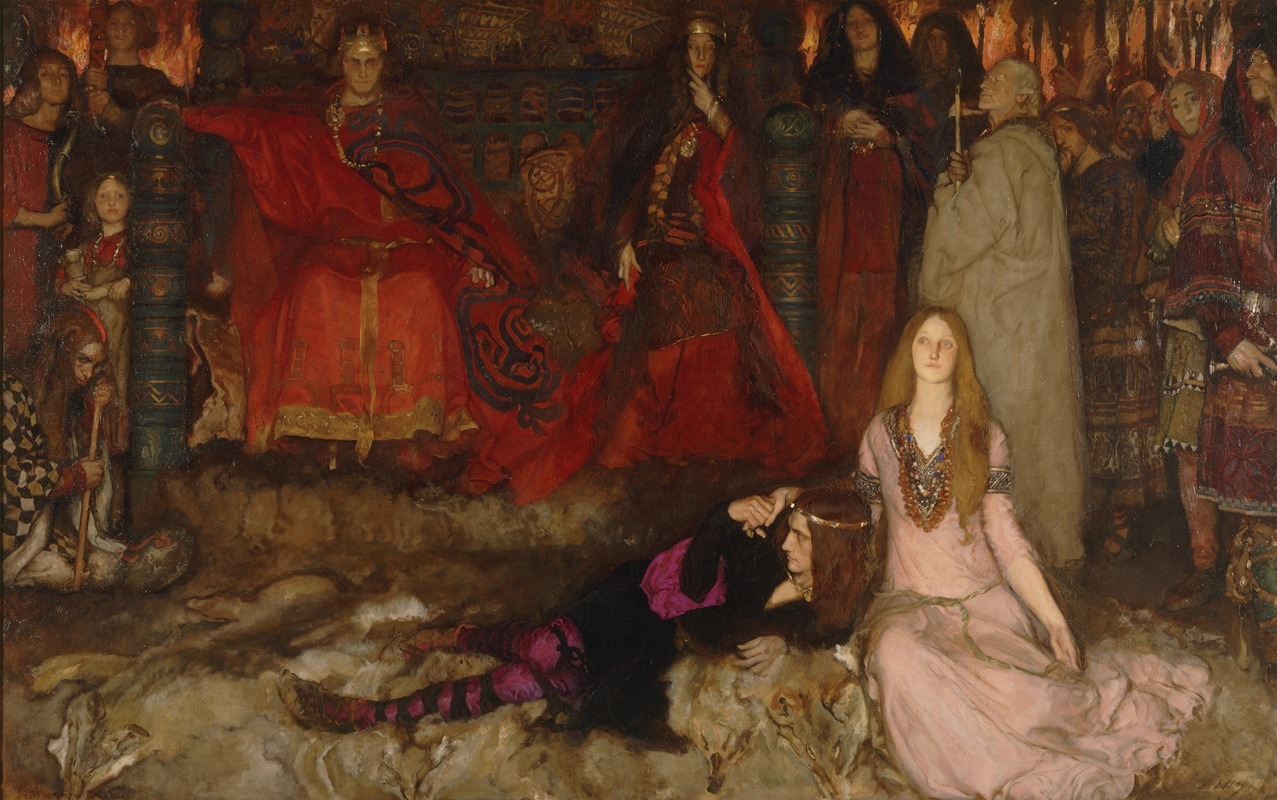
The Play Scene in Hamlet, Act III, Scene II
A hand-painted replica of Edwin Austin Abbey’s masterpiece The Play Scene in Hamlet, Act III, Scene II, meticulously crafted by professional artists to capture the true essence of the original. Each piece is created with museum-quality canvas and rare mineral pigments, carefully painted by experienced artists with delicate brushstrokes and rich, layered colors to perfectly recreate the texture of the original artwork. Unlike machine-printed reproductions, this hand-painted version brings the painting to life, infused with the artist’s emotions and skill in every stroke. Whether for personal collection or home decoration, it instantly elevates the artistic atmosphere of any space.
Edwin Austin Abbey's painting "The Play Scene in Hamlet, Act III, Scene II" is a significant work that captures a pivotal moment from William Shakespeare's renowned tragedy, "Hamlet." Abbey, an American artist known for his illustrations and paintings, completed this work in 1897. The painting is part of Abbey's broader interest in Shakespearean subjects, reflecting his fascination with the Elizabethan era and its dramatic literature.
The scene depicted in Abbey's painting is one of the most critical in "Hamlet." It portrays the moment during the play-within-a-play, "The Mousetrap," which Prince Hamlet stages to confirm King Claudius's guilt in the murder of Hamlet's father. In Act III, Scene II, Hamlet has arranged for a group of actors to perform a play that mirrors the circumstances of his father's death. His intent is to observe Claudius's reaction and determine whether the ghost's accusation of murder is true.
Abbey's painting captures the tension and drama of this scene. The composition is carefully arranged to focus on the expressions and body language of the characters, particularly Hamlet and Claudius. Hamlet is often depicted with a keen, watchful gaze, scrutinizing Claudius for any sign of guilt. Claudius, on the other hand, is shown in a moment of discomfort or agitation, which ultimately leads to his abrupt departure from the performance, confirming his guilt to Hamlet.
Abbey's attention to detail is evident in the costumes and setting, which are meticulously rendered to reflect the Elizabethan period. The artist's use of color and light enhances the dramatic effect, drawing the viewer into the psychological intensity of the scene. The painting not only illustrates a key moment in the play but also serves as a testament to Abbey's skill in capturing the essence of Shakespearean drama.
Edwin Austin Abbey was a prominent figure in the late 19th and early 20th centuries, known for his historical and literary subjects. Born in 1852 in Philadelphia, Abbey began his career as an illustrator for magazines before moving to England, where he became associated with the Pre-Raphaelite Brotherhood and the Arts and Crafts Movement. His work often reflects a deep appreciation for historical accuracy and narrative detail, qualities that are evident in "The Play Scene in Hamlet, Act III, Scene II."
The painting is part of the collection at the Yale University Art Gallery, where it continues to be appreciated by scholars and art enthusiasts alike. Abbey's interpretation of this iconic scene from "Hamlet" remains a valuable contribution to the visual arts, offering insight into both the play's enduring themes and the artist's creative vision.
In summary, Edwin Austin Abbey's "The Play Scene in Hamlet, Act III, Scene II" is a masterful depiction of a crucial moment in Shakespeare's "Hamlet." Through his attention to detail and dramatic composition, Abbey brings to life the tension and intrigue of the play, highlighting his own artistic talents and his deep engagement with literary subjects.






